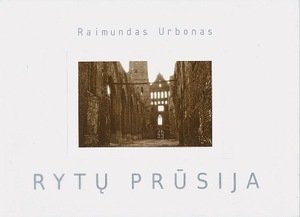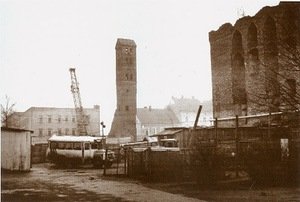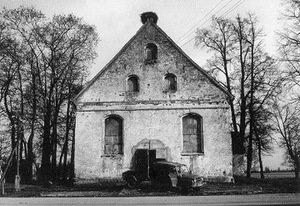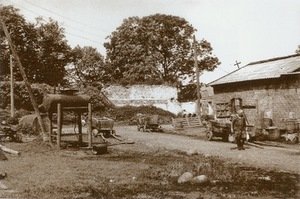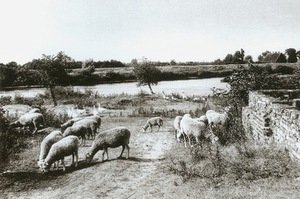IMAGE SEARCHING FOR OBSERVER 3
In brief: The album “Eastern Prussia” of the art photographer Raimundas Urbonas (1963 – 1999) published by Kitas Takas (2012) after his death is marked with a clear sign of history – the photographer worked in a strictly defined territory that was closely related with the past of Lithuania, the process of inevitable decay and change may be felt in works. Despite these features, the author does not want to call the cycle of Eastern Prussia a simple quotation of reality as neither the first nor the second may actually be quoted.
Photographs of R.Urbonas were remembered not so long ago – in 2009, when the albums “Doooooris. Klaipėda Artists’ Group” (Kultūros Projektai, 2009) and “36 Shots. Raimundas Urbonas” (KCCC Kultūrpolis, LPhU Klaipėda Branch, 2009) were published. In addition to many other themes that interested the photographer, several photographs of the cycle “Eastern Prussia” may be found in the publications. This was the time when photographers who did not correspond to the context of the Lithuanian school of photography were taken to daylight again.
On another hand, it is not worth to blame the cultural change and tendencies of fashion only. Actually, R. Urbonas was an art photographer who stood out from others by his silent, subtle, stoic and individual existence. Vanishing landscapes of Eastern Prussia, falling apart houses and manors captured in the album are usually static, the composition is frequently central focusing attention to the main objects. The artist is not the most important figure here. The man with the camera looks around non-obtrusively, he is here but not with the intention to acknowledge his own or Eastern Prussia’s existence.
Raimundas avoids sentimentality and feelings, he does not try to pander views of the Minor Lithuania present in memory, does not idealise, does not use richer colours and in this way he makes Eastern Prussia the lost land that is somewhere and nowhere at the same time.
Photographs forming the album could be divided into two groups. The first group is the world of subtle towers dipped in the mist and dark arches (e.g., Ragainė, Karaliaučius), where the subtle longing of the author and the modest sacredness of the places may be felt. Meanwhile, other photographs are non-personal, they are burnt out by bright rays of the sun, they scream by bright silhouettes of buildings.
Clear rhythms may be noticed only in several photographs, and they are related with the signs of civilisation the most often (road-side bollards, power columns, metal rings of gates). Without stepping into the view and getting closer to it, R. Urbonas preserves all tiny details that create an organic and natural chaos, which does not guarantee visual pleasure but provokes the viewer to analyse.
Black-and-white or slightly toned views remind of old films that are always accompanied by the strange feeling of a loss, nostalgia and pride. The impression of a captured dream is strengthened by the quality of photographs which has been touched by time – the majority of negatives were lost, and original prints were reproduced while creating the album.
The album of R. Urbonas “Eastern Prussia” is like a transparent veil. The thin transparent wrapper of the publication under which the words “Raimundas Urbonas” and “Eastern Prussia” appear timidly also represent this concept. The cover of the book is decorated by the view of Karaliaučius cathedral, which may be considered the main icon of the Eastern Prussia cycle considered the biggest work of life of the artist.








